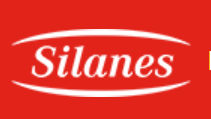预约演示
更新于:2025-05-07
LM-024
更新于:2025-05-07
概要
基本信息
非在研机构- |
权益机构- |
最高研发阶段批准上市 |
首次获批日期 (2013-05-01), |
最高研发阶段(中国)- |
特殊审评- |
登录后查看时间轴
关联
100 项与 LM-024 相关的临床结果
登录后查看更多信息
100 项与 LM-024 相关的转化医学
登录后查看更多信息
100 项与 LM-024 相关的专利(医药)
登录后查看更多信息
3
项与 LM-024 相关的文献(医药)2017-07-13·ACS Medicinal Chemistry Letters3区 · 医学
Discovery of the Antitumor Effects of a Porphyrazine Diol (Pz 285) in MDA-MB-231 Breast Tumor Xenograft Models in Mice
3区 · 医学
Article
作者: Barrett, Anthony G. M. ; Cochran, Lauren E. ; Trivedi, Evan R. ; Hoffman, Brian M. ; Kandela, Irawati K. ; Mazar, Andrew P. ; McAuliffe, Katherine J.
2012-12-01·Cellular Signalling3区 · 生物学
Nerve growth factor stimulation of ERK1/2 phosphorylation requires both p75NTR and α9β1 integrin and confers myoprotection towards ischemia in C2C12 skeletal muscle cell model
3区 · 生物学
Article
作者: Nedev, Hinyu ; Yanay, Nurit ; Marcinkiewicz, Cezary ; Cohen, Gadi ; Saragovi, H. Uri ; Lazarovici, Philip ; Nevo, Yoram ; Ettinger, Keren ; Arien-Zakay, Hadar ; Lecht, Shimon ; Aga-Mizrachi, Shlomit
International Journal of Environmental Research and Public Health
Metabolic Mechanism of Bacillus sp. LM24 under Abamectin Stress
Article
作者: Xie, Wenyu ; Wang, Ruzhen ; Li, Dehao ; Xie, Qilai ; Yin, Xudong ; Zhu, Yueping ; Ye, Jinshao
100 项与 LM-024 相关的药物交易
登录后查看更多信息
外链
| KEGG | Wiki | ATC | Drug Bank |
|---|---|---|---|
| - | - | - |
研发状态
10 条最早获批的记录, 后查看更多信息
登录
| 适应症 | 国家/地区 | 公司 | 日期 |
|---|---|---|---|
| 糖尿病并发症 | - | 2013-05-01 |
登录后查看更多信息
临床结果
临床结果
适应症
分期
评价
查看全部结果
| 研究 | 分期 | 人群特征 | 评价人数 | 分组 | 结果 | 评价 | 发布日期 |
|---|
No Data | |||||||
登录后查看更多信息
转化医学
使用我们的转化医学数据加速您的研究。
登录
或

药物交易
使用我们的药物交易数据加速您的研究。
登录
或

核心专利
使用我们的核心专利数据促进您的研究。
登录
或

临床分析
紧跟全球注册中心的最新临床试验。
登录
或

批准
利用最新的监管批准信息加速您的研究。
登录
或

特殊审评
只需点击几下即可了解关键药物信息。
登录
或

生物医药百科问答
全新生物医药AI Agent 覆盖科研全链路,让突破性发现快人一步
立即开始免费试用!
智慧芽新药情报库是智慧芽专为生命科学人士构建的基于AI的创新药情报平台,助您全方位提升您的研发与决策效率。
立即开始数据试用!
智慧芽新药库数据也通过智慧芽数据服务平台,以API或者数据包形式对外开放,助您更加充分利用智慧芽新药情报信息。
生物序列数据库
生物药研发创新
免费使用
化学结构数据库
小分子化药研发创新
免费使用
